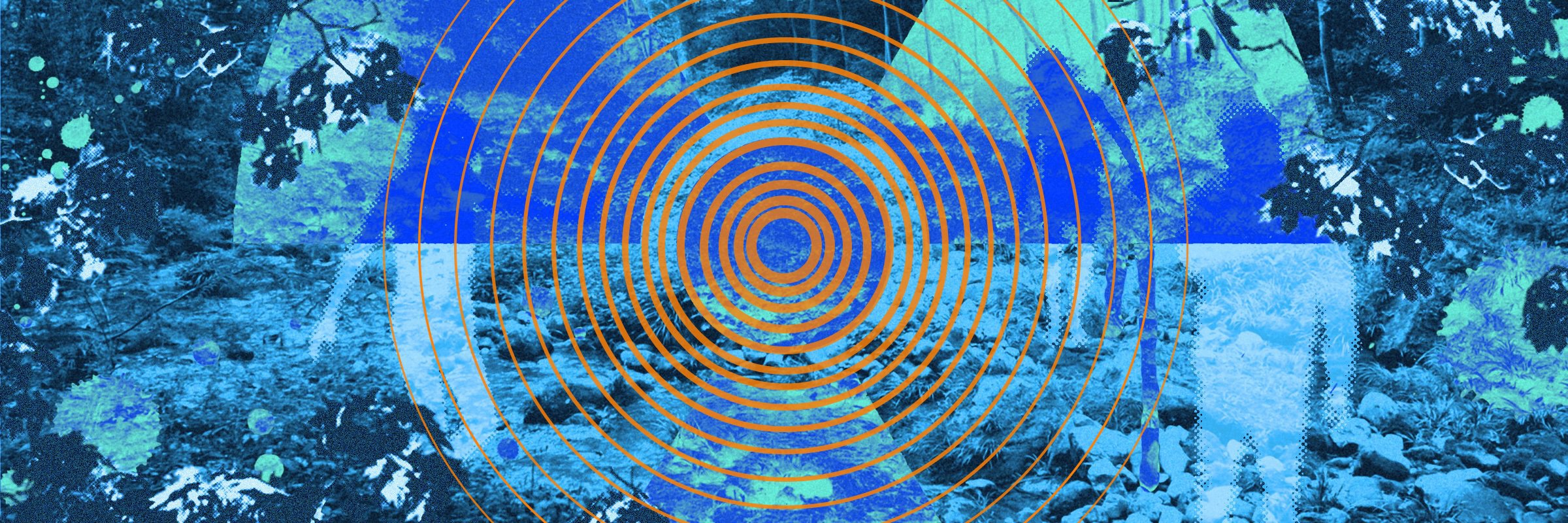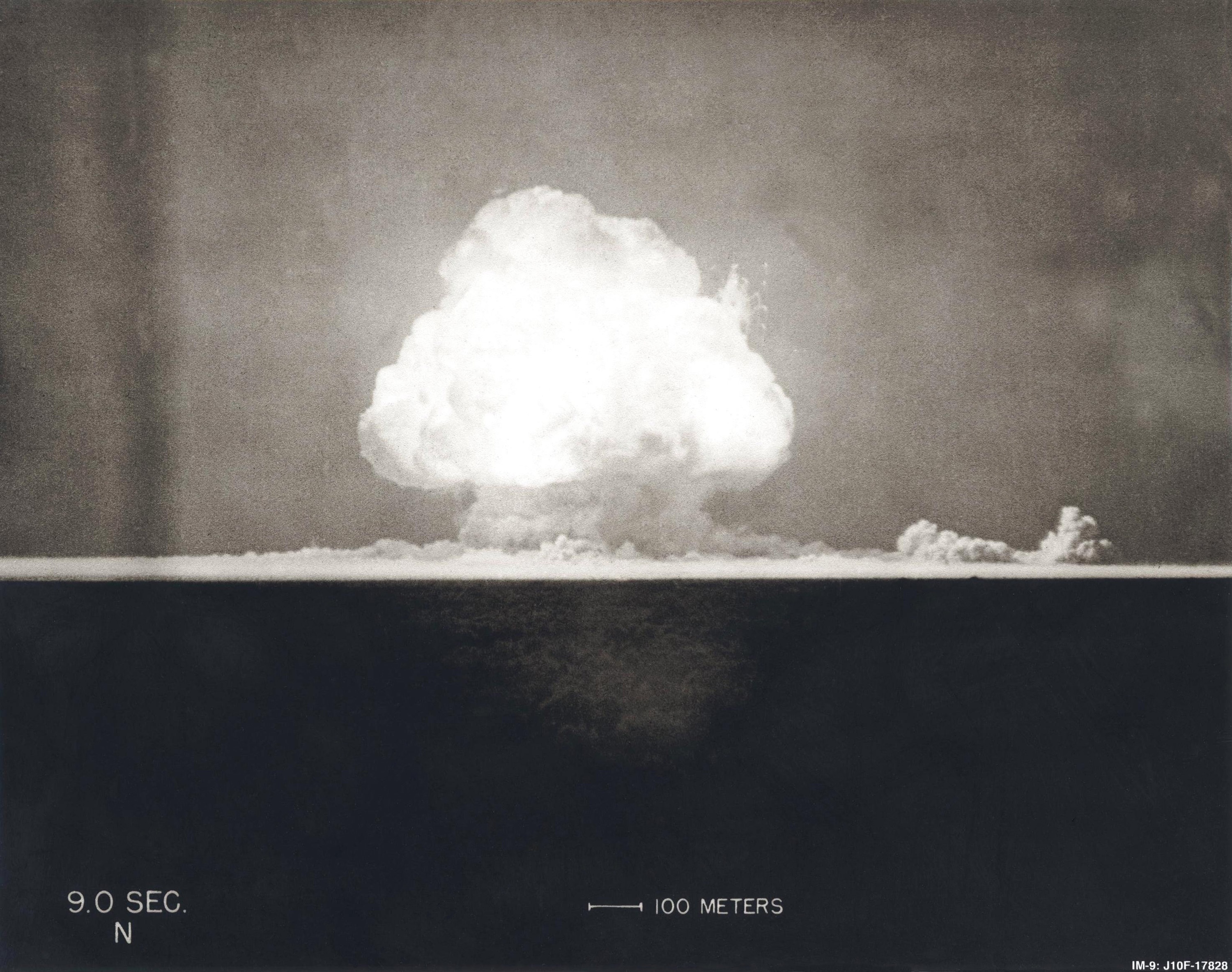
Americans are typically told the story of the scientists who built the atomic bomb as an intellectual race for the world’s most powerful weapon during wartime.
More than 100 atmospheric weapons tests were conducted in the U.S. and its territories between 1945 and 1962. It resulted in widespread radioactive fallout across much of the U.S., largely spread by prevailing winds and rain. In addition, contaminated waste was shipped and haphazardly stored across the country, creating new toxic Superfund sites stretching from Colorado to New York.
The narrative skips the radioactive fallout felt all over the United States — towns near the first blast, neighborhoods downwind of testing sites, villages next to uranium mines or suburbs by nuclear waste dumps. U.S. residents have lived in these places and died young from cancers and other illnesses, or gave birth to babies with uranium in their bodies.
The Radiation Exposure Compensation Act is set to expire this summer. Since the radiation program first was created in the 1990s, more than 54,000 claims from those affected. But not everyone has been eligible.
Thousands more could have been recognized and compensated with legislation proposed in Congress last year. The measure cleared the Senate with bipartisan support but was struck from the final version of a massive defense spending bill as lawmakers haggled over details in the House.
The first-ever U.S. nuclear weapons test — the detonation of a plutonium bomb called “Trinity” — occurred on the afternoon of July 16, 1945. Decades later, the extent of the fallout has only now been understood, thanks to new modeled data by researchers.
May 24, States Newsroom: Missouri residents affected by radiation exposure push Congress to extend benefits
Critics cite high costs, but bipartisan lawmakers and activists rallying in favor of the bill say the victims have already paid the price through medical bills and lost loved ones, and that it’s ultimately the government’s wrong to make right.
By Ashley Murray
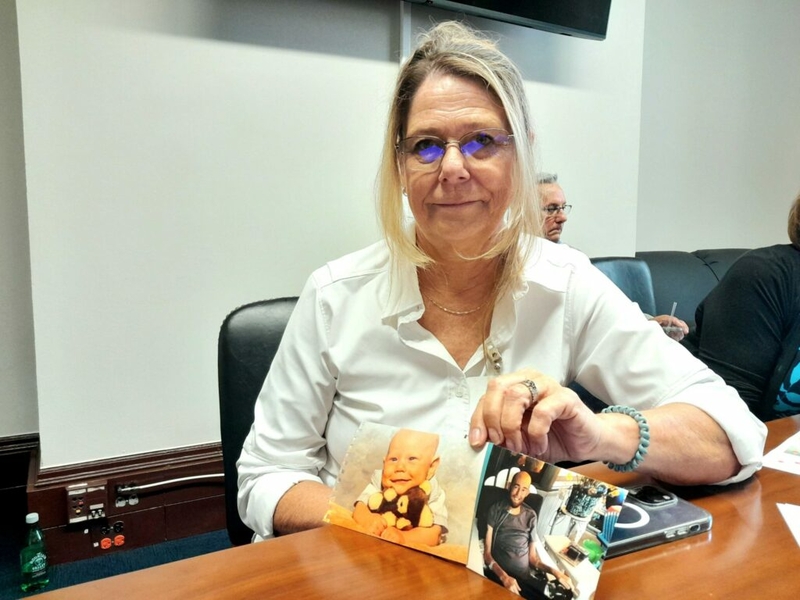
WASHINGTON — A fund to compensate Americans sickened by exposure to atomic bomb tests, uranium mining and radioactive waste expires in just under 20 days, and activists and lawmakers are scrambling to keep the fund active and open to additional victims.
A bill to reauthorize and expand the Radiation Exposure Compensation Act, often shortened to RECA, sailed through the U.S. Senate in early March on a bipartisan 69-30 vote, but the House has yet to take it up for a vote.
The U.S. Senate-passed legislation, championed by Republican Sen. Josh Hawley, aims to extend the program by six years and expand eligibility to several new locations, including his state of Missouri where, over decades, residents witnessed numerous rare similar cancers among neighbors in and around St. Louis. Colorado is also a state included in the bill’s expansion.
Chemical plants in downtown St. Louis and Weldon Spring, Missouri, processed uranium during the nation’s WWII effort to build the first atomic bomb. Radioactive waste from the plants were stored and dumped around the area.
States Newsroom’s Missouri Independent, in collaboration with the Associated Press and MuckRock, obtained and combed through thousands of government records that revealed the government downplayed and ignored the dangers of the radioactive waste.
May 16, Arizona Mirror: ‘Time is running out’: Navajo Nation urges Congress to act on RECA expansion bill
The RECA bill passed through the U.S. Senate with a bipartisan 69-30 vote on March 7. But since being sent to the House on March 11, the bill hasn’t moved.
By Shondiin Silversmith
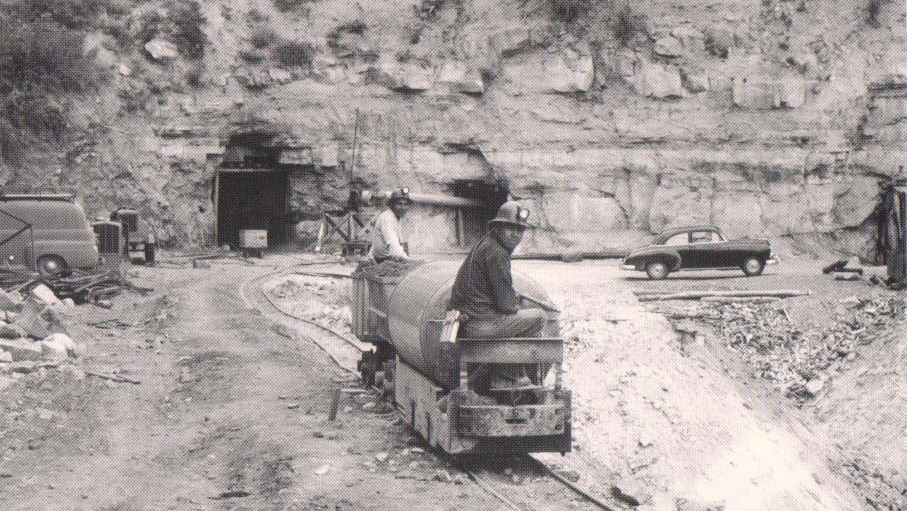
Kathleen Tsosie remembers seeing her dad come home every evening with his clothes covered in dirt. As a little girl, she never questioned why, and she was often more excited to see if he had any leftover food in his lunchbox.
“We used to go through his lunch and eat whatever he didn’t eat,” Tsosie said, recalling when she was around 4 years old. “And he always had cold water that came back from the mountain.”
Tsosie’s father, grandfather, and uncles all worked as uranium miners on the Navajo Nation near Cove, Arizona, from the 1940s to the 1960s. The dirt Tsosie’s father was caked in when he arrived home came from the mines, and the cold water he brought back was from the nearby springs.
Tsosie grew up in Cove, a remote community located at the foothills of the Chuska mountain range in northeastern Arizona. There are 56 abandoned mines located in the Cove area, according to the Environmental Protection Agency.
Because of that history, Tsosie became an advocate for issues related to downwinders and uranium mine workers from the Navajo Nation, including the continuation of the Radiation Exposure Compensation Act.
The Radiation Exposure Compensation Act, or RECA, provides a program that compensates individuals who become ill because of exposure to radiation from the United States’ development and testing of nuclear weapons.
RECA was initially set to expire in 2022, but President Joe Biden signed a measure extending the program for two more years. Now, it’s set to expire in less than a month.
May 16, States Newsroom: Advocates press U.S. House to act soon on compensation for nuclear testing victims
The new price tag went down to an estimated cost of $50 to $60 billion over 10 years, after cuts to qualifying diseases, medical benefits and the filing window, according to the CRFB.
By Ashley Murray
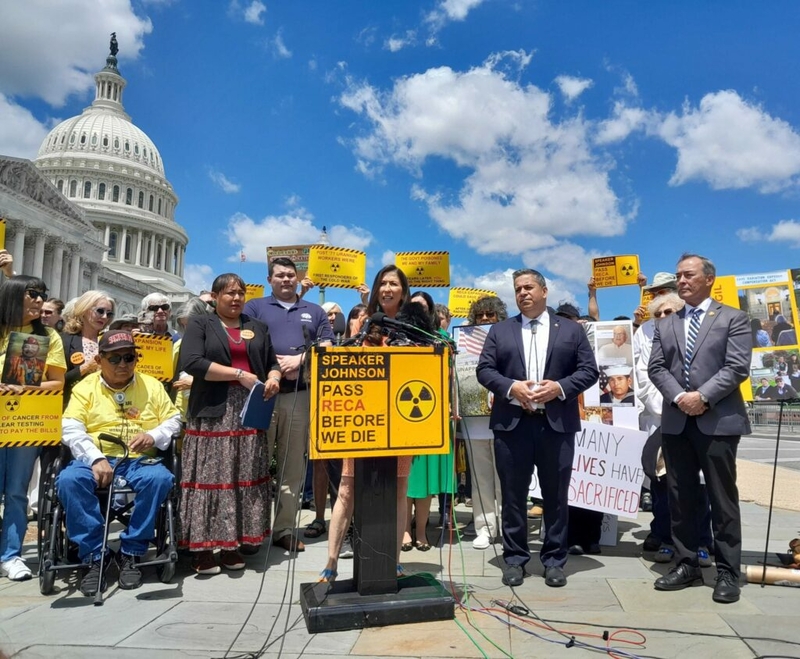
WASHINGTON — Lawmakers and advocates rallied outside the U.S. Capitol Thursday, urging House lawmakers to extend a fund for victims of U.S. nuclear testing that is set to expire in less than a month.
But critics say the program is too expensive and should be winding down, and it’s not clear if the House will act before the looming deadline.
New Mexico Democrats Sen. Ben Ray Luján and Rep. Teresa Leger Fernandez, and Guam’s Republican House delegate, James Moylan, among others, called on House Speaker Mike Johnson of Louisiana to bring the legislation to the floor.
“We stand with community members from across the United States, ranging from New Mexico, where they exploded the very first atomic bomb, to Guam to Missouri to Navajo to Utah to Colorado to people in Texas,” Fernandez said. “Communities that share a common bond of hardship, of death and of illness that came about because of the nation’s program to build and test atomic weapons.”
Legislation to expand and extend the fund already passed the Senate in early March in a bipartisan 69-30 vote.
Advocates and survivors have long said they were not warned prior to nuclear testing and were forgotten in the following decades as the consequences of nuclear fallout and waste affected their families.
The Radiation Exposure Compensation Fund, often shortened to RECA, was established in 1990 and pays one-time sums to those who developed certain diseases after working on U.S. nuclear tests before 1963, or who lived in counties downwind from test explosion sites between January 1951 and October 1958, and the month of July in 1962, in Arizona, Nevada and Utah.
Critics worry that the funds will be designated automatic mandatory spending, meaning funding couldn’t be adjusted from year to year by lawmakers like discretionary spending.
“Compensation may very well be warranted for individuals harmed by the government’s nuclear activities, but the substantial deficit impact of the legislation is concerning and unnecessary,” the Committee for a Responsible Federal Budget wrote in March. The organization also pointed out that the cost is not offset by other federal spending cuts.
May 13, Utah News Dispatch: Advocates want to expand compensation for downwinders, but Utahns in Congress worry about price tag
'Without clear evidence linking previous government action to the expanded list of illnesses, and a price tag north of $50 billion, Senator Romney could not support the legislation.'
May 7, Utah News Dispatch: Cox joins other Western governors calling on Congress to expand compensation for downwinders
The statement comes on the heels of a similar push from Western governors urging members of Congress to support Hawley’s bill.
April 23, Utah News Dispatch: Bill from Utahns in Congress could jeopardize expanded compensation for downwinders
Members of Utah’s congressional delegation are jeopardizing Hawley’s bill by introducing a bill of their own that would simply extend the program deadline by two years, but not expand it.
April 9, States Newsroom: U.S. Sen. Josh Hawley proposes adding radiation exposure bill to stalled tax package
When asked by States Newsroom if the proposal had gained traction, Hawley said he’s 'talked to multiple senators about this and where my position is.'
March 27, Source New Mexico: The ‘clock is ticking’ on RECA; downwinders call on public to pressure House speaker
Rep. Teresa Leger Fernández, who has carried previous RECA bills in the House, called this recent exclusion from the spending package a 'moral failure.'
March 7, Source New Mexico: Expansion of the federal radiation compensation fund passes the U.S. Senate, with White House support; now faces House vote
RECA expansion passes U.S. Senate
By Danielle Prokop
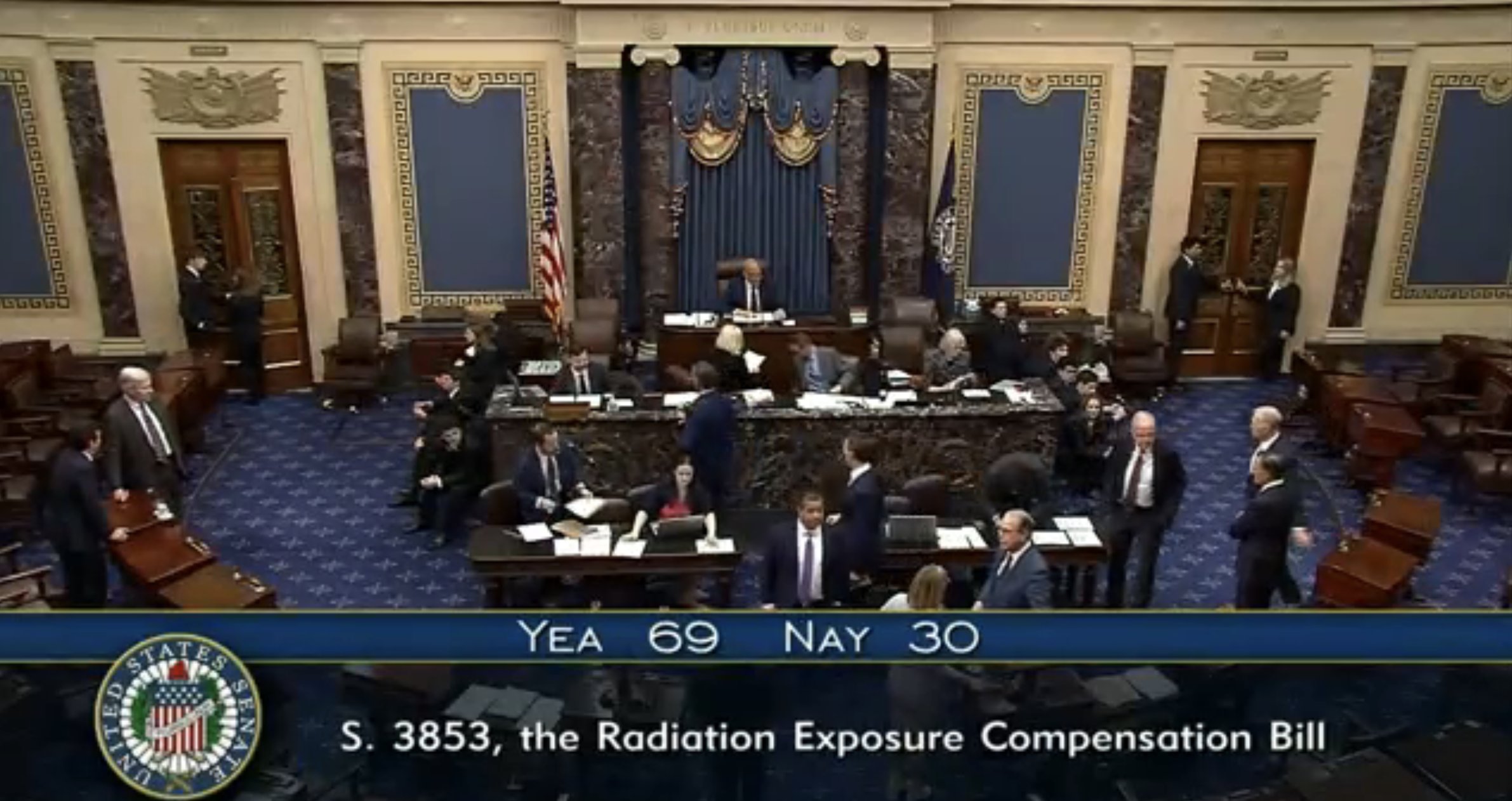
The U.S. Senate voted to expand eligibility and extend the life of a fund for people exposed to radiation by the federal government — including New Mexicans harmed by the first-ever nuclear test at Trinity.
In a 69-30 vote, the Senate passed S. 3853, which funds the Radiation Exposure Compensation Act — called RECA — past its June sunset date for another six years. The bill also increases the payment amount and broadens who can receive payments from the fund around the country.
Many “downwind” communities are excluded from compensation. The expansion bill would fold in for the first time thousands of New Mexicans from the area surrounding the Trinity Test Site, along with people from Idaho, Montana, Colorado and Guam. And instead of just a handful of counties where fallout fell, the entire states of Utah, Nevada and Arizona would be included.
In addition, the bill would significantly expand how many uranium workers could be covered by extending the time period past 1971 through 1990.
And the bill acknowledges communities where nuclear waste was dumped in Missouri, as well as Kentucky, Tennessee, and Alaska.
The Missouri Independent: U.S. Senate approves compensation for St. Louis nuclear waste exposures
By Allison Kite
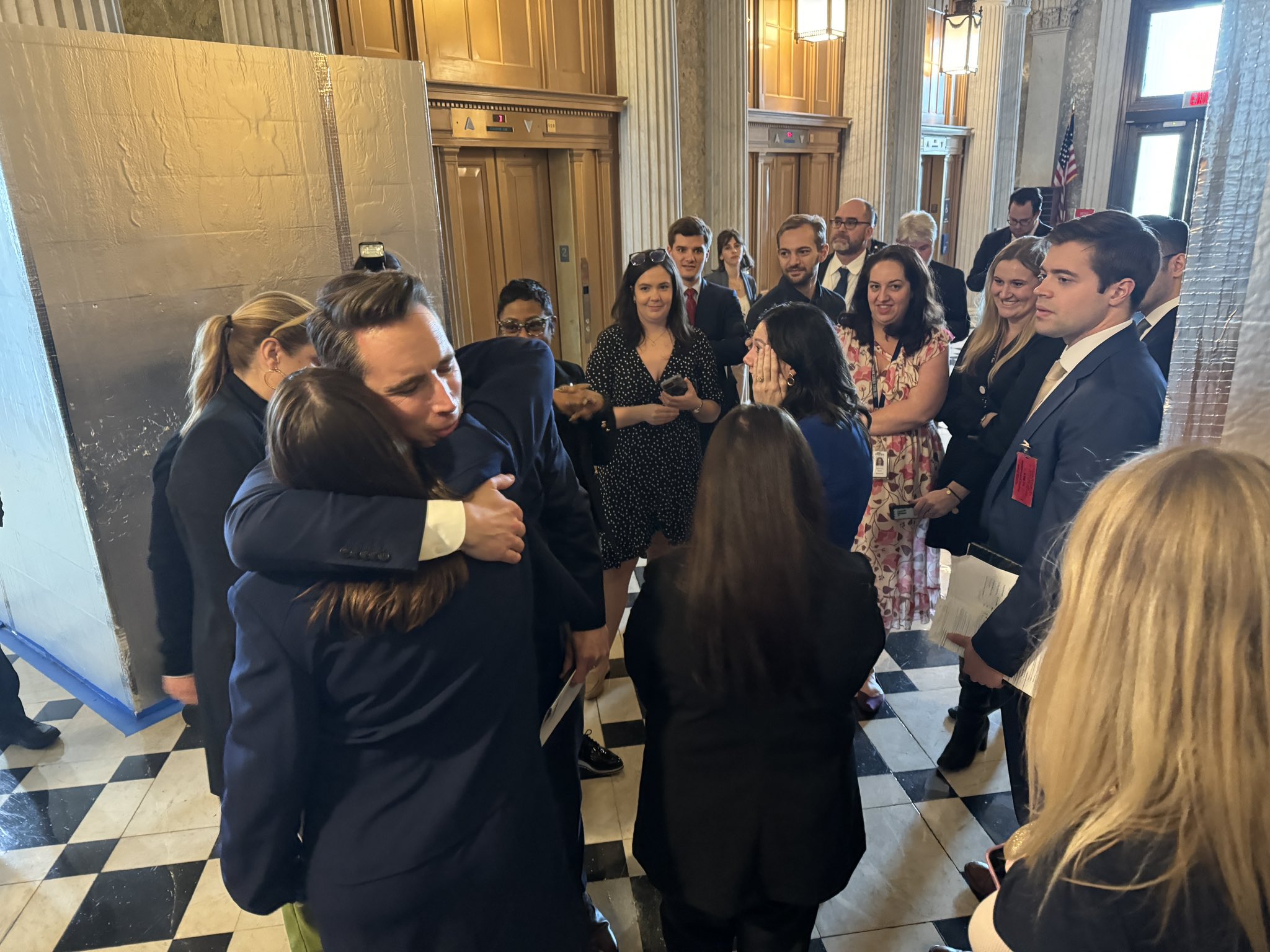
The legislation, sponsored by Republican Sen. Josh Hawley of Missouri, extends the Radiation Exposure Compensation Act, which is set to expire, and expands it to cover individuals who were exposed to the radioactive waste that remains scattered across the St. Louis region.
“The United States Senate has the opportunity to do its part — its small part — to continue to make this nation what it could be, what we promised it will be, and to put right things that have been wrong,” Hawley said just before senators voted 69-30 in favor of his bill.
The legislation, which is backed by President Joe Biden, would represent a federal recognition of — and apology for — St. Louis’ decades-long struggle with radioactive waste.
The St. Louis area was instrumental to the Manhattan Project, the name given to the World War II-era effort to build the world’s first atomic bomb. Mallinckrodt Chemical Works refined uranium in downtown St. Louis during the war that was used in the first sustained nuclear chain reaction in Chicago, a key breakthrough in the bomb’s development.
The Senate last summer voted 61-37 in favor of Hawley’s update to the Radiation Exposure Compensation Act. But the expansion was included as an amendment to the National Defense Authorization Act and stripped out by a conference committee of senators and representatives.
Hawley has criticized Senate Republican leaders, particularly Minority Leader Mitch McConnell of Kentucky, for allowing the expansion to be removed from the defense bill.
McConnell voted in favor of the bill senators passed Thursday, which was a standalone expansion of RECA. It still needs approval by the House of Representatives.
The White House announced its endorsement of the legislation Wednesday evening, saying in a statement that the administration looks forward to working with legislators to ensure funding for the program.
“The president believes we have a solemn obligation to address toxic exposure, especially among those who have been placed in harm’s way by the government’s actions,” the statement says.
Hawley said on a conference call Monday that the standalone RECA expansion bill was expected to cost only about one-third as much as the version senators approved last summer. (The Union of Concerned Scientists said the new cost estimate is less than half the original CBO estimate of $147 billion.) The legislation still covers the same geographic areas, he said.
The nonpartisan Congressional Budget Office has not released an independent analysis of the new legislation.
The standalone RECA legislation would offer coverage for individuals who were exposed to radioactive waste in Missouri, Tennessee, Alaska or Kentucky and were diagnosed with multiple myeloma, non-Hodgkin’s lymphoma and cancer of the thyroid, breast, esophagus, stomach, pharynx, small intestine, pancreas, bile ducts, gallbladder, salivary gland, urinary bladder, brain, colon, ovary, bone, kidney or lung. It covers liver cancer as long as the patient doesn’t have cirrhosis or hepatitis B.
Surviving spouses and children could also seek compensation if the individual exposed to the radioactive waste has died.
The legislation senators considered last summer would have also covered diabetes, systemic lupus erythematosus, multiple sclerosis or Hashimoto’s disease. Those conditions are not in the new version of the bill.
Under the bill, the fund for uranium workers and miners would be extended for six years. Last summer’s bill would have extended it by 19.
In urging his colleagues to vote for the bill, Hawley noted the federal government is now testing underneath homes in the St. Louis area to determine whether a subdivision built in the 1990s was constructed on top of radioactive contamination.
New Mexico
‘They scrapped us’: The Trinity downwinders and New Mexico mine workers who remain unrecognized
The world’s first downwinders keep up the fight, as more communities in the state punctured by uranium mines step forward.
By Danielle Prokop and Marisa Demarco, Source New Mexico
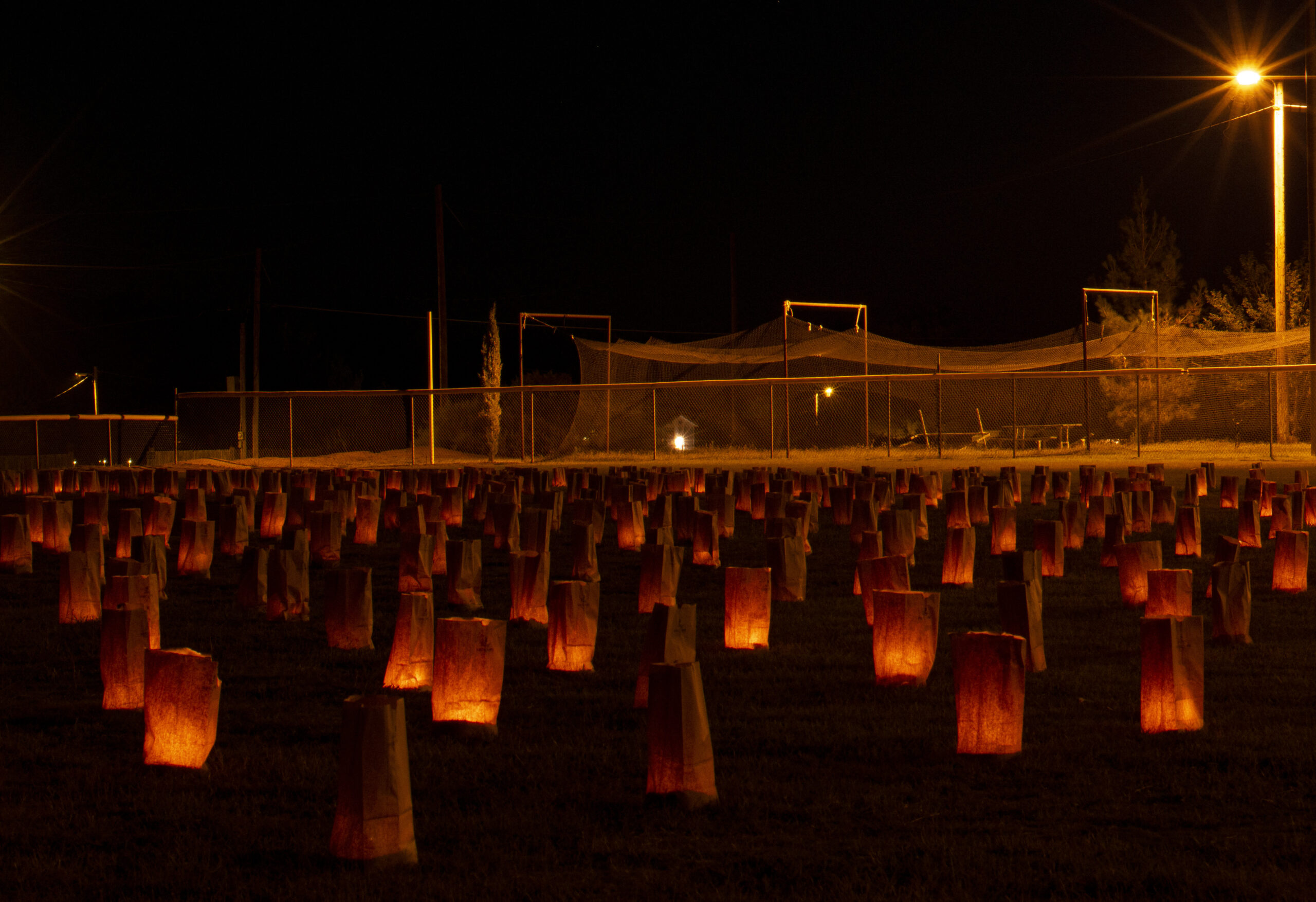
Those living nearest to the first nuclear blast in history have suffered for generations.
In New Mexico, Trinity Test site neighbors weren’t warned or evacuated before the U.S. government detonated the atomic bomb in 1945. The light was so bright it could be seen hundreds of miles away. Nearly half a million people resided within a 150-mile radius of the blast. Witnesses said ash rained down for days.
Cancers, diseases, early deaths, infant mortality and more have plagued people in New Mexico ever since the United States government set off the bomb in the Jornada del Muerto. But despite organizing and advocacy for well over a decade, they were neither recognized nor compensated.
Declassified documents show that in the days immediately following the blast, Manhattan Project planners realized the fallout radius was much larger and more dangerous than they’d expected.
The impacts of the Atomic Age are broad in New Mexico, in Indigenous lands and throughout the region. Not only were many exposed to radiation during the Trinity Test in 1945, subsequent uranium mining for the purpose of developing nuclear weapons sickened and killed workers and their families.
Though the mines were mostly privately owned, the U.S. government was the customer paying for that uranium ore for decades after World War II. Hundreds of dormant and unaddressed mines remain like open wounds in the land, continuing harm to their neighbors.
Lawrence and Arlene Juanico never knew the land without uranium mines. Now, they are fighting for recognition of their impact on Laguna Pueblo. The Juanicos and other volunteers have worked to track diagnoses, and help people apply for benefits for family members.
“No one was taking notes here,” Arlene Juanico said. “My partner and I are working to get an accurate amount of who was all affected by that.”
Arizona
‘We’re running out of time’: Program for Arizonans exposed to radiation set to expire in June
Survivors, politicians and Navajo Nation officials react after legislation to compensate more downwinders and miners fails in Congress.
By Shondiin Silversmith, Arizona Mirror
Gerdes and his family lived in the northern Arizona city in the 1960s, at least 300 miles from the Nevada Test Site, where the U.S. government tested nuclear weapons north of Las Vegas.
Marti Gerdes remembers living in Prescott as a kid and, every winter, she and her family would make snow ice cream, mixing milk and sugar with snow.
It was a treat she recalls having any time it snowed — except for one year when her mother told them they couldn’t have snow ice cream because “there’s something bad in the air.” “I had no clue what she was talking about,” Gerdes said.
Gerdes and her family lived in the northern Arizona city in the 1960s, at least 300 miles from the Nevada Test Site, where the U.S. government tested nuclear weapons north of Las Vegas.
Those tests sent radioactive fallout into the atmosphere, dispersed by clouds and precipitation in several states, including Arizona, government modeling and data have since shown, putting people at risk of serious illnesses for decades.
Over the years, several Arizona political leaders have advocated for broadening RECA-covered areas in Arizona.
In July, U.S. Rep. Greg Stanton, D-Ariz., introduced the Downwinders Parity Act, which proposed updates to the RECA to include all the affected areas of Mohave County in Arizona and Clark County in Nevada. The bill would have also instructed the attorney general to outline for Congress what efforts will be made to educate and conduct outreach to those made newly eligible. The bill was co-sponsored by Rep. Ruben Gallego, D-Ariz.
When the amendments failed to be included in the defense spending bill, Stanton said he would keep working to expand and extend the RECA.
Utah
‘How much money are our lives worth?’: Utah downwinders call RECA expansion’s failure a betrayal
More people across the state could have been included in the U.S. program for those who may have been exposed to radiation during Cold War-era weapons testing.
By Kyle Dunphey, Utah News Dispatch
People like Mary Dickson aren’t legally considered downwinders, the term used to describe those exposed to radiation during Cold War-era nuclear weapons testing in Nevada and New Mexico.
“Every time I say I’m a downwinder, I get ‘Oh, you grew up in St. George?’” said Dickson, of Salt Lake City, who was diagnosed with thyroid cancer in 1985. “It’s been really frustrating because for 30 years, I’ve been trying to raise awareness that no, it wasn’t just southern Utah, it went everywhere.
In Utah, the government’s radiation compensation program covered residents who lived in one of 10 counties —– Beaver, Garfield, Iron, Kane, Millard, Piute, San Juan, Sevier, Washington and Wayne —– for two consecutive years from 1951 to 1958, or during the summer of 1962. People who worked in uranium mines, mills or transporting ore in Utah from 1942 to 1971 were also eligible.
With the proposed expansion, anyone in Utah diagnosed with certain cancers caused by nuclear testing would have been eligible for compensation. The measure also would have extended RECA, which is set to expire this June. The limited eligibility under the current bill has been a source of major frustration for health care providers like Becky Barlow, director of the Radiation Exposure Screening and Education Program in St. George, which screens people exposed to radiation and helps them apply for compensation.
“Obviously radiation doesn’t stop at the county line,” said Barlow, whose program covers the lower half of Utah, and parts of Nevada and Arizona. Still, Barlow gets calls from all over the Mountain West from those who suspect they got sick from radiation, but who aren’t eligible under the federal program.
Idaho
‘The fight isn’t over’: Idaho downwinders persist after Congress cuts compensation for them
Residents work to understand the ongoing impacts of nuclear test fallout and radiated clouds over Idaho decades ago.
By Mia Maldonado, Idaho Capital Sun
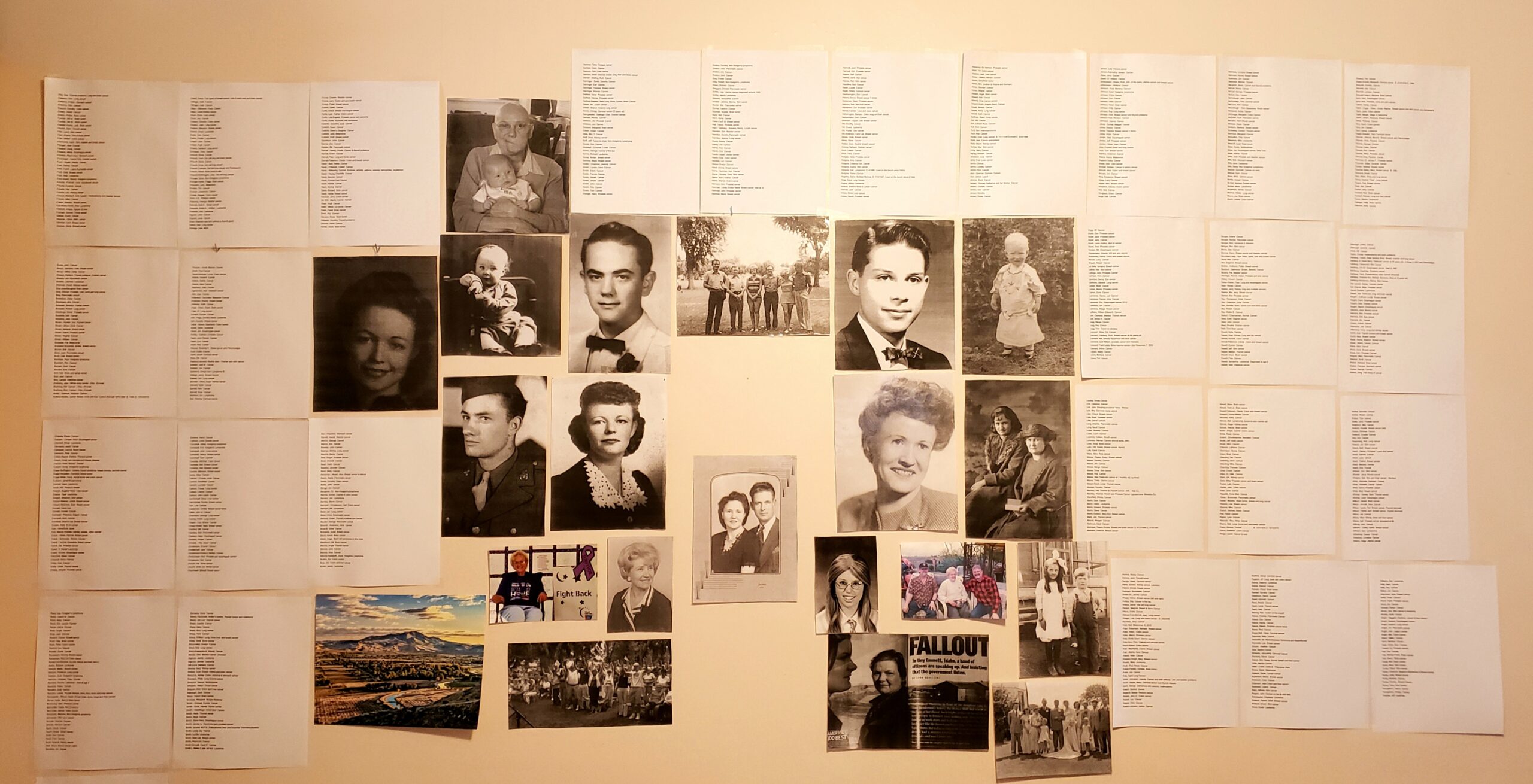
For nearly two decades, Tona Henderson collected newspaper articles, letters and photographs documenting who in the small town of Emmett was diagnosed with cancer, including her own family. The result is a wall in her home covered in pictures and pages displaying the names of community members who may have been exposed to lethal radiation during the country’s Cold War-era nuclear weapons testing program.
Henderson is the director of the Idaho Downwinders, a nonprofit representing people who lived in Idaho between 1951 to 1962 when the United States tested nuclear weapons aboveground in Nevada. She has been a leading advocate for the federal government to provide financial compensation to Idahoans impacted by that nuclear testing, which sent radiated clouds beyond Nevada’s boundaries to other neighboring states, including Idaho.
Gem County, along with Idaho’s Custer, Blaine and Lemhi counties, are among the top five in the U.S. that were most affected by fallout from Nevada nuclear tests in the mid-20th century, according to research by the National Cancer Institute.
American children at the time faced a high risk of developing thyroid cancer if they consumed milk from pastures where cows and goats grazed that were contaminated with iodine-131 — a radioactive element that is released into the environment during nuclear weapons testing. Children, with smaller and still-developing thyroids, consumed more milk than adults, placing them at greater risk for cancer because of the concentration of iodine-131 in the thyroid gland.
Emmett is a tight-knit community, Henderson said. The population stands at about 8,000 people today, according to the latest census numbers. She used to run a doughnut shop in town, and customers, knowing her role in tracing diagnoses, would tell her about locals facing cancer. From 2004 to 2019, she said she recorded hundreds of instances of cancer diagnoses among Emmett residents who were present during the testing period.
“That’s a lot of people for such a small town,” she said. “The fight isn’t over.”
Montana
‘What do we have to do?’: Fresh awareness of historic nuclear radiation in Montana neighborhoods
Fallout from weapons tests elsewhere could have had devastating health consequences in the state. Political support for recognition and compensation grows.
By Blair Miller, Daily Montanan
Growing up in Cut Bank, Montana, Patti Jo Ruegamer would spend most summer days going to the farm with her mother and father in Meriwether, about 25 miles west.While her parents worked, she would go to the neighbor’s place, where she and other children drank fresh milk from the cows there, and would spend the day riding horses, swimming in the river or roaming the area.
The clouds drifting above them, though, may have contained radioactive fallout from nuclear weapons experiments performed by the U.S. government hundreds of miles away in the 1950s and ’60s.
A landmark study by the National Cancer Institute in 1997 showed that out of the top 25 counties in the United States that received the most radioactive byproduct from weapons tests in Nevada, 15 were in Montana. The report identified Montana’s Meagher County, home to White Sulphur Springs, as having received more radiation than any other county in the U.S.
Researchers found people in 15 Montana counties — Meagher, Broadwater, Beaverhead, Chouteau, Jefferson, Powell, Judith Basin, Madison, Fergus, Gallatin, Petroleum, Lewis and Clark, Blaine, Silver Bow and Deer Lodge — received estimated doses of iodine-131 to their thyroids between 9 and 16 rads.
But much of the rest of the state, including the Blackfeet Indian Reservation where Ruegamer lived, saw an estimated 6 to 9 rads, also among the highest in the United States.
Colorado
‘It lives in geologic time’: Nuclear contamination and health risks remain throughout Colorado
How the proposed expansion of a compensation program could impact the state, and the ongoing fight to make it happen.
By Chase Woodruff, Colorado Newsline
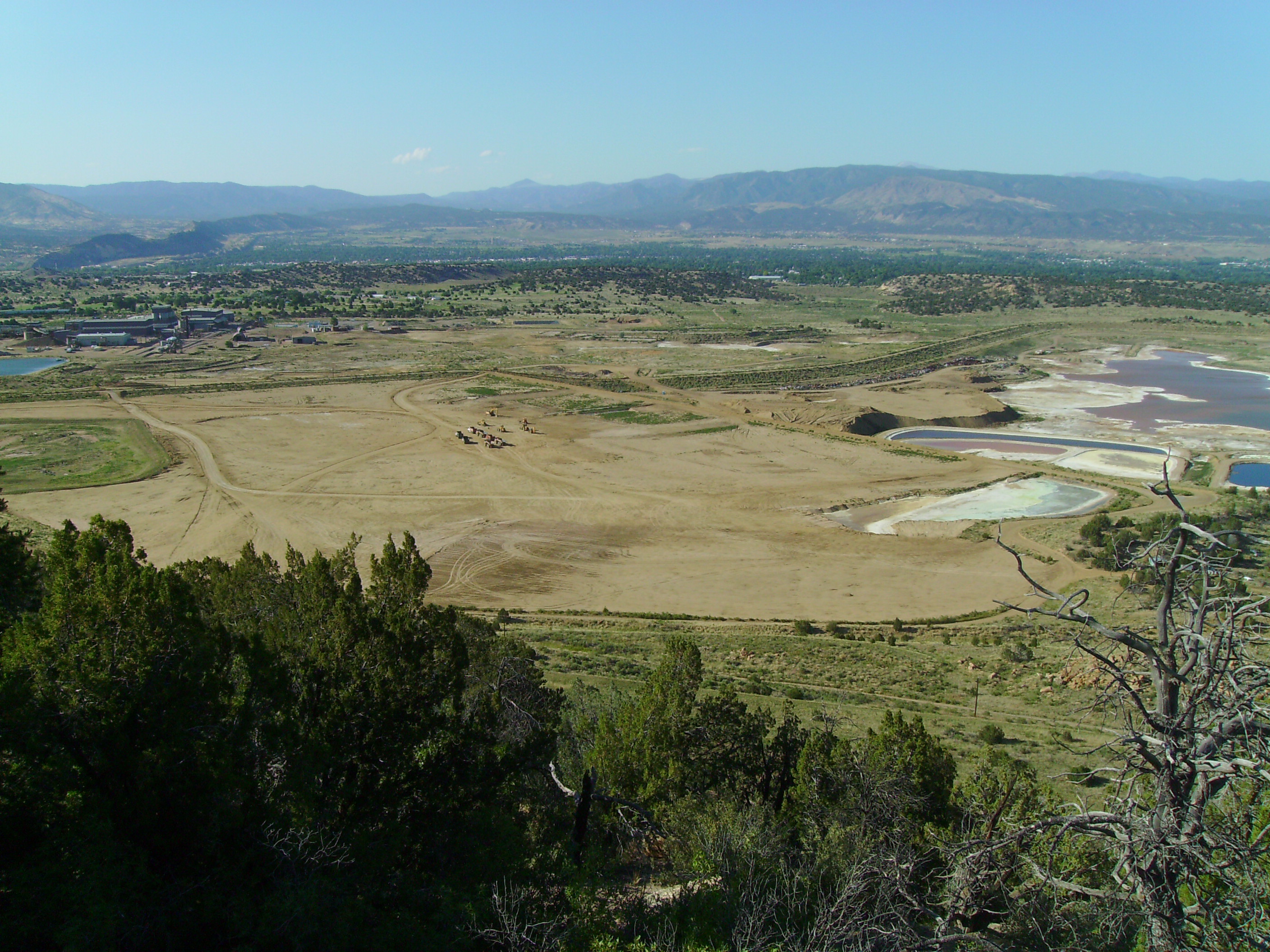
When Jane Thompson moved away from Uravan in western Colorado decades ago, it was still a quiet company town of about 1,000 residents, all of whom had some connection to the uranium mill owned by Union Carbide.
“It was a great place to grow up,” said Thompson, who helps keep the town’s legacy alive as president of the Rimrocker Historical Society. Her grandfather was a miner until retirement. Her father was, too, after her parents married. “They were the second-to-last to leave Uravan when they sent everybody out.”
Uravan and the surviving mining towns nearby, including Nucla and Naturita, are just a few of the many places in Colorado where residents were caught up in — and in many cases bore the risks of — the Manhattan Project’s sprint for the bomb and the nuclear arms race of the Cold War.
Missouri
‘We got mad’: Years of pain after a childhood near radioactive Coldwater Creek in Missouri
RECA expansion could have helped with care for people suffering after living near contaminated waterways and sites in the state. A U.S. senator vows to keep fighting for it.
By Allison Kite, Missouri Independent
![An undated photo from the 1980s, of a child swinging from a rope into Coldwater Creek. The photo is from a scrapbook kept by Sandy Delcoure, who lived on Willow Creek in Florissant and donated the scrapbook to the Kay Drey Mallinckrodt Collection. Only one of the photographs from the scrapbook includes any information, which read: “Willow Creek children on Cold Water [sic] Creek. We can’t keep the children away from the creek. The only alternative is to get it cleaned up.” (State Historical Society of Missouri, Kay Drey Mallinckrodt Collection, 1943-2006.)](https://cdn.muckrock.com/news_photos/2023/07/11/Archive-01.jpg)
Billy Winters’ childhood in Florissant in the 1960s sounds enviable.
His parents bought a new house as thousands of other families flocked to the growing St. Louis suburbs. Winters’ neighborhood was full of other kids to play with. He spent almost every day splashing in a creek that ran near his home.
But Winters didn’t know at the time that the creek waters could be dangerous. The creek he was playing in was a small tributary to Coldwater Creek, which unbeknownst to him had been contaminated with radioactive waste left over from World War II. When Coldwater Creek flooded, its waters would back up in the creek near Winters’ family home.
The St. Louis region was pivotal to the development of the first nuclear bomb in the 1940s. Uranium for the Manhattan Project — the name given to the effort to develop the bomb — was refined in downtown St. Louis. The leftover radioactive waste has plagued the metro area ever since.
Private companies and government agencies with oversight of the radioactive material documented the possible dangers of the radioactive waste repeatedly but made little effort to keep it from spreading as suburbs sprung up around the airport and Coldwater Creek throughout the 1950s and 1960s. An investigation last summer by The Missouri Independent, MuckRock and The Associated Press laid bare the way they dismissed the spreading contamination as “slight,” “minimal” or “low-level.”
The reaction from federal and Missouri state lawmakers to “Atomic Fallout” was swift. Within days, Sen. Josh Hawley, R-Missouri, and Rep. Cori Bush, D-Missouri, pledged action, calling the investigation “devastating” and decrying the federal government’s “negligence.” “This report confirms what we in the community have known for decades: that for the past 75 years, the federal government actively and knowingly treated St. Louis as a dumping ground for harmful and toxic radioactive waste,” Bush said.
In response, Missouri Attorney General Andrew Bailey announced his office would “do everything in our power to hold the federal government accountable.” His office assigned several attorneys to the case and are still investigating. A state representative for the affected area convened a townhall, telling residents:
“Because of the journalists dropping these documents and finding out for us that our federal government knew this and never told the public for 50 years, it was huge. We were desensitized to the insanity.”
Legislators and affected families in seven Western states are vowing to reintroduce legislation to extend and expand the federal radiation compensation program in 2024 and a flurry of pre-filed bills in Missouri would increase state funding for a victims’ compensation fund, citing our reporting.
And, in perhaps the clearest sign that the federal government is taking ownership of the contamination at Coldwater Creek, the U.S. Army Corps of Engineers announced in January that it would install signs along the waterway warning people of the risks — more than 70 years after workers first realized barrels of radioactive waste were left nearby.
The Radius series is a collaboration between MuckRock and States Newsroom outlets, including Arizona Mirror, Source New Mexico, Colorado Newsline, Utah News Dispatch, The Daily Montanan, Idaho Capital Sun and The Missouri Independent.
